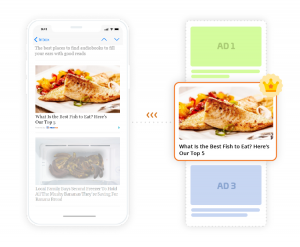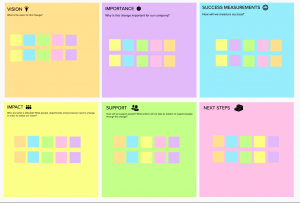The metaverse and Web3 aren’t here yet, but it’s time to start thinking about the positive opportunities they might create as well as the negative risks.
Don’t believe them when they tell you the metaverse is already here. What we do have is a swarm of virtual realities but they’re not yet connected. When they are, it will be possible to enter the metaverse.
What does the term “metaverse” mean exactly? It’s actually a 30 year-old term, first coined by science fiction author Neal Stephenson is his novel “Snow Crash.” It’s clumsily derived from the Greek, meta being a prefix meaning “beyond.” So beyond the universe? The trouble is, versus means “turn into” which makes perfect sense in the word “universe” — turn into one — but less sense as turn into beyond.
We turned to Tim Parkin, a marketing consultant advising his clients on how to prepare for the metaverse, for more clarity. “In reality, the metaverse is really undefined, it’s very ambiguous. Most importantly, it’s going to change. So what it is today will not be what it is tomorrow. That makes it a moving target.” Nevertheless, Parkin was willing to venture that it’s a whole new layer built on the infrastructure of the internet, opening “a new dimension of potential and possibilities.”
Essentially, the metaverse will take the digital environment many of us have been existing in for at least the last two years and upgrade it to a virtual-reality based imaginary world, creating many opportunities, including for marketers, as well as “some scary realities,” he said.
From VR to the metaverse
Anyone who has put on a VR headset understands what virtual reality looks like, but the metaverse, in concept at least, goes way beyond that. “If you think about the internet right now, it’s made up of a collection of servers and websites and different platforms and apps, but it’s all in the same sphere. With the metaverse, we can have this virtual reality experience together. It’s all happening in this giant sphere, this world where we can all co-exist an collaborate and participate in different experiences, adventures and communications.”
This doesn’t rule out hybrid use cases, Parkin explained. “You might be interacting through a physical environment as well. You might be in a grocery store and be able to interact virtually with people or order things virtually. It’s not just sitting at home with a headset on. You could be in the real world, but connecting it to the metaverse.”
Of course, the metaverse will be very firmly rooted in the reality of hardware. “We often forget that. It does depend on computers to run simulations, process transactions and render these worlds — and it is all connected to the internet. We’re not going to be escaping the internet; this is built on top of the internet.” And just like the internet, it won’t be owned by anybody. “That’s the beauty of it,” said Parkin, “but also the bad part. If nobody owns it, how do you police it?”
Web3 is often mentioned in the same breath as the metaverse. What’s the connection? “Web3 is this next level of the internet that incorporates blockchain and the idea of decentralization. By layering in blockchain we can track transactions and have a source of truth for everything that’s happening. The metaverse is separate, but there are opportunities to overlap Web3 and the metaverse.”
Some enterprises are already experimenting with aspects of the metaverse, but Parkin insists that the metaverse itself does not yet exist. “There are people working on experiences, but until we have consumers who can actually participate, I don’t see it right now existing, or even in then near future,” he explained. “We are still a little ways off of it being highly adopted and people doing anything of useful value inside the metaverse.”
How should marketers prepare for this strange future?
The metaverse may not be with us yet, but it’s never too early to start thinking about what it will mean. “I think there are three big things,” Parkin said. “First, keep an open mind. This is going to change. If you think back to the original internet with web pages and email and what those looked like, and compare that to today, it’s dramatically different. So don’t make any judgments about what it could be, because people will find value for it. It’s an exploratory process.”
Secondly, he said, look at what big brands are doing to prepare. “The Nikes and the Taco Bells, they have the resources and the necessity to be playing in the metaverse. Most companies don’t have the time or can’t afford to mess around with this, but the big companies that need to be constantly innovating or pushing the envelope, they’re going to be the ones exploring this.”
Finally, he said, go slow. “There’s a lot of hype and excitement and a lot of people think there’s going to be a first-mover’s advantage. This is not going to be as transformative as many people think in the next two to three, or maybe even five years. I would be very methodical and thoughtful about this and unless you’re a really big brand then you should not be pushing this very much. It’s nice to sit on the sidelines and watch, but tread very slowly and see where you can fit in, because this is very volatile and very risky.”
A big win for the gaming industry
In addition to watching what the big brands are doing, Parkin suggests paying attention to the companies that are likely to be supporting the metaverse, above all in the gaming industry. “Epic Games has been around for a long time,” he said. “They are creators of many video games and the Unreal Engine,” an advanced 3D creation tool. “Epic Games will be a substantial player in the metaverse because the metaverse is essentially one giant video game world.”
The gaming industry will be ahead of the curve, Parkin predicts, because of their long experience with virtual worlds — just not connected. “The whole gaming culture is something marketers should really pay attention to,” he said, “because there are many things that will see new, but are just passé to the gaming industry.” Parkin confesses cheerfully to having a degree in game design.
Advertisers, of course, have already moved into the gaming space, displaying messages within virtual worlds and developing metrics to measure performance. “This is just bringing that gaming experience to a global world where we can socialize and spend time together, not necessarily in a gaming context, but there are a lot of underlying elements from gaming we can learn from.”
Look out for dystopia
Guess what, there are huge potential downsides to all of this. The metaverse could turn out to be a bad place (yes, that’s literally what “dystopia” means). It’s not hard to see why. The potential harmful effects of social media, especially on the mental health of young people, have been widely discussed, not least because Facebook appeared to have concealed internal research on the harmful effects of Instagram. That’s just from looking at an app or a website, not being completely immersed in a reality, large parts of which Facebook, or Meta, will surely seek to control.
“Social media is a dangerous place,” Parkin agreed. “In the metaverse, we’ve removed another level from reality. You’re a character on screen, not a real person. There are social dynamics we need to think about and prepare for.” Binge gaming was on the increase in 2021 with a third of gamers accustomed to playing five hours straight. It’s disturbing to imagine vulnerable people spending lengthy stretches as characters in an unreal world
“The dark side of this is interesting to think about,” said Parkin. “There’s a lot of bad activity that happens on the internet. A lot of people are focusing on the opportunities and positives of the metaverse, but there’s going to be a lot of deceptive and duplicitous behavior in this metaverse. It’s not all ponies and rainbows.”
One thing we can be sure of, the regulatory authorities will be left in the dust.
The post Marketers: The metaverse is coming appeared first on MarTech.
MarTech(30)
Report Post







